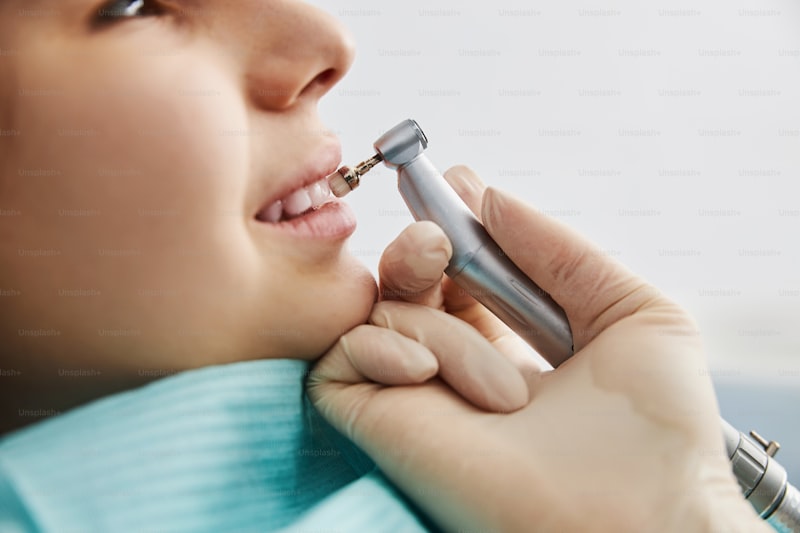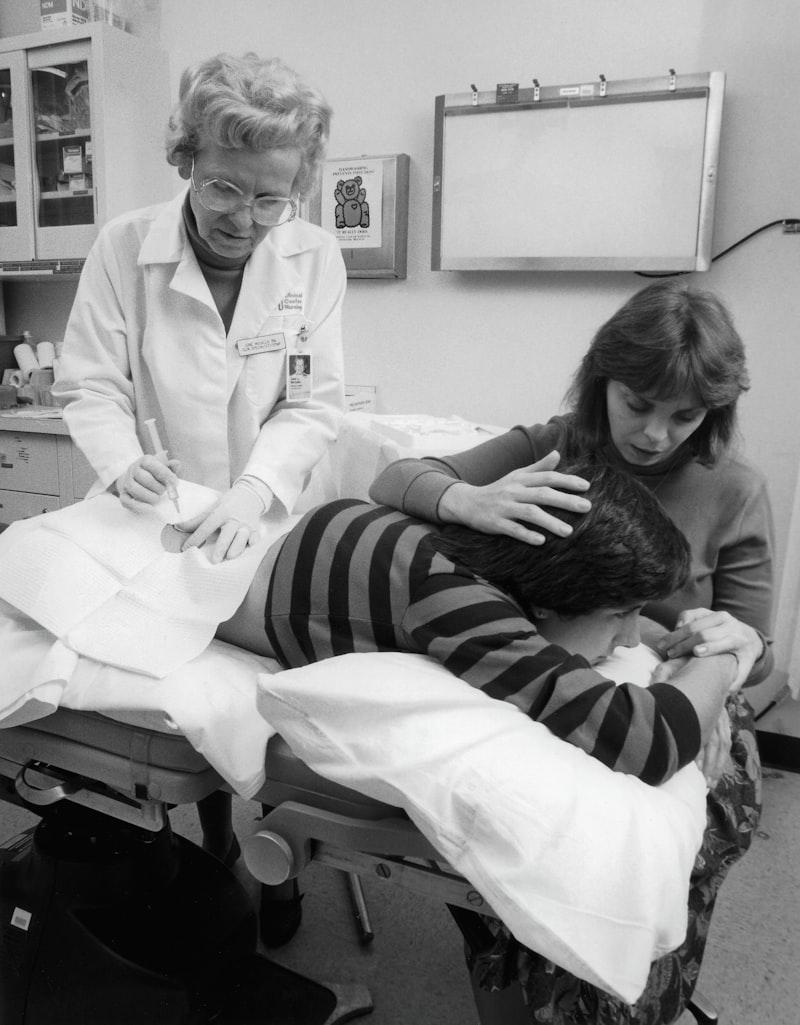Oral cancer is a serious health concern that affects many people worldwide. Understanding how to prevent and treat oral cancer can significantly reduce the risk and improve outcomes for those affected.
Preventing oral cancer starts with healthy lifestyle choices. Avoiding tobacco in any form, whether it’s smoking or chewing, is crucial as tobacco use is one of the leading causes of oral cancer. Limiting alcohol consumption and maintaining a balanced diet rich in fruits and vegetables can also lower the risk. Regular dental check-ups are essential for early detection of any abnormalities in the mouth.
Regular self-examinations of the mouth can help in early detection of oral cancer. Look for any persistent sores, lumps, or changes in the lining of the mouth or tongue. If you notice any unusual symptoms such as difficulty chewing or swallowing, persistent ear pain, or a sore throat that doesn’t heal, it’s important to consult a dentist or physician promptly.
Treatment for oral cancer depends on the stage and location of the cancerous cells. Options may include surgery to remove tumors, radiation therapy to target cancer cells, and chemotherapy to destroy cancer cells or prevent their growth. In some cases, a combination of these treatments may be recommended. The goal of treatment is to eradicate cancer cells while preserving oral function and quality of life.
During and after treatment, supportive care is essential to manage side effects and promote recovery. This may include dietary adjustments to maintain nutrition, pain management, and emotional support to cope with the challenges of cancer treatment.
Preventing and treating oral cancer requires a proactive approach to health, including lifestyle modifications and regular medical check-ups. By understanding the risk factors, recognizing symptoms early, and seeking timely medical advice, individuals can improve their chances of preventing oral cancer or achieving successful treatment outcomes.
Cutting-Edge Techniques: Preventing Oral Cancer Before It Starts
Oral cancer, a silent yet deadly disease, affects millions globally each year. However, with advancing medical technology and proactive measures, preventing its onset is increasingly within our grasp. Understanding the risk factors and adopting cutting-edge prevention techniques are crucial steps in this battle.
One of the foremost methods in preventing oral cancer involves regular screenings. Dentists can detect early signs that might go unnoticed, offering a significant advantage in early intervention. These screenings are painless and quick, making them accessible for everyone.
Moreover, lifestyle modifications play a pivotal role. Avoiding tobacco products in any form, whether smoking or chewing, dramatically reduces the risk of oral cancer. Tobacco contains harmful chemicals that damage cells and increase susceptibility to cancerous growths.
In addition to screenings and lifestyle changes, maintaining good oral hygiene is paramount. Brushing and flossing regularly not only keep teeth and gums healthy but also reduce the risk of infections that could potentially lead to oral cancer.
Furthermore, advancements in medical research have led to promising new techniques. Immunotherapy, for instance, boosts the body’s immune response to fight cancer cells effectively. Targeted therapies are also being developed, aiming to attack cancer cells with precision while minimizing damage to healthy tissues.
Preventing oral cancer is a multifaceted approach involving screenings, lifestyle adjustments, and leveraging cutting-edge medical advancements. By taking proactive steps and staying informed, individuals can significantly reduce their risk and lead healthier lives.
The Ultimate Guide to Early Detection of Oral Cancer Symptoms
Spotting oral cancer symptoms early can be crucial for timely treatment. Unlike other forms of cancer, oral cancer often manifests symptoms that are visible or noticeable, making early detection possible with vigilance. Here’s a comprehensive guide to help you understand and recognize potential signs:
One of the initial signs to watch for is persistent mouth sores that don’t heal within two weeks. These sores may be painless initially but can become troublesome if they linger. Another common indicator is red or white patches inside the mouth or on the lips. These patches might seem harmless but can signify underlying issues that need attention.
Pay close attention to any changes in voice, difficulty swallowing, or persistent hoarseness. These can be symptoms of oral cancer affecting the throat or vocal cords. Similarly, unexplained bleeding in the mouth or numbness in the lips or mouth area shouldn’t be ignored. These symptoms can often go unnoticed but are critical indicators that warrant a closer look.
Regular self-checks are essential. Use a mirror to examine your mouth’s interior, including the gums, tongue, and throat. Look for any unusual lumps, bumps, or changes in texture. If you wear dentures, ensure they fit properly and inspect the gums underneath for any irregularities.
Remember, early detection increases the chances of successful treatment. If you notice any of these symptoms persisting for more than two weeks, consult a dentist or healthcare provider promptly. They can perform a thorough examination and recommend further tests if necessary.
By staying vigilant and knowing what to look for, you can play a proactive role in your oral health. Don’t hesitate to seek professional advice if you have concerns—it could make all the difference.
This article focuses on providing practical advice and raising awareness about early detection of oral cancer symptoms, using engaging language and a conversational tone to captivate readers’ interest.
Innovative Treatments: Revolutionizing Oral Cancer Care
Imagine a world where fighting oral cancer becomes not just a battle, but a triumph of innovation and technology. In recent years, advancements in medical science have brought forth a wave of new treatments that are reshaping the landscape of oral cancer care. From targeted therapies to cutting-edge surgical techniques, these innovations are offering new hope and improved outcomes for patients facing this formidable disease.
One of the most promising breakthroughs in oral cancer treatment is the development of targeted therapies. Unlike traditional treatments that can affect healthy cells along with cancerous ones, targeted therapies hone in on specific molecules or pathways involved in cancer growth. This precision not only enhances treatment effectiveness but also minimizes side effects, offering patients a better quality of life during and after treatment.
Another frontier in the battle against oral cancer is immunotherapy. Harnessing the power of the body’s immune system, immunotherapy drugs help to recognize and attack cancer cells. This approach is particularly groundbreaking as it stimulates the body’s natural defenses to fight the disease, potentially leading to longer-lasting remissions and better overall survival rates.
In addition to these systemic therapies, there have been significant strides in surgical techniques for oral cancer. Robotic surgery, for instance, allows surgeons to perform intricate procedures with unmatched precision and minimal invasiveness. This means quicker recovery times for patients and reduced post-operative complications, marking a significant improvement in surgical outcomes.
Furthermore, advancements in radiation therapy have also played a pivotal role in transforming oral cancer care. Techniques such as intensity-modulated radiation therapy (IMRT) deliver high doses of radiation precisely to the tumor while sparing surrounding healthy tissue. This targeted approach not only enhances treatment efficacy but also reduces the risk of long-term side effects like dry mouth or difficulty swallowing.
As research continues to push the boundaries of what is possible in oral cancer treatment, these innovations stand as testament to the relentless pursuit of better outcomes for patients. With each new discovery and technological leap, we come closer to a future where oral cancer is not just treated, but conquered.
Lifestyle Changes That Could Save Your Life: Oral Cancer Prevention Tips
Warding off oral cancer begins with simple yet impactful lifestyle adjustments. These changes aren’t just beneficial; they could potentially save your life. Oral cancer, a serious health concern, often manifests subtly, making prevention crucial.
Firstly, adopting a balanced diet rich in fruits and vegetables can bolster your body’s defenses. These foods are packed with antioxidants that help combat harmful free radicals, reducing the risk of cell damage that may lead to cancerous growths.
Equally important is avoiding tobacco in all forms, whether smoking or chewing. Tobacco is a primary culprit in oral cancer cases, laden with carcinogenic substances that harm oral tissues over time. Quitting tobacco can significantly lower your risk, promoting better oral health overall.
Regular dental check-ups are another cornerstone of prevention. Dentists can detect early signs of oral cancer during routine exams, allowing for prompt intervention if any abnormalities are found. This proactive approach enhances chances of successful treatment should cancer be detected.

Furthermore, limiting alcohol consumption is advisable. Excessive alcohol intake is linked to an increased risk of various cancers, including those affecting the mouth and throat. Moderation is key; reducing alcohol consumption can contribute positively to oral health.
Lastly, practicing good oral hygiene habits, such as daily brushing and flossing, maintains oral health and reduces the likelihood of oral cancers. These habits remove plaque and bacteria that could potentially trigger harmful changes in oral tissues.
By integrating these lifestyle changes into your daily routine, you empower yourself against oral cancer. Prevention is not only possible but pivotal in safeguarding your overall well-being. Take charge of your health today with these actionable steps towards oral cancer prevention.
What You Need to Know About Oral Cancer Screening: A Comprehensive Guide
During an oral cancer screening, the dentist will carefully examine your mouth, including the lips, gums, tongue, cheeks, and throat. They look for any abnormalities such as sores, lumps, or discolorations that may indicate the presence of cancerous or precancerous cells. The examination is usually quick and painless, often done during a routine dental check-up.
One of the primary reasons for conducting oral cancer screenings is to catch cancer early, when it’s most treatable. Many oral cancers can be successfully treated if detected early. This makes regular screenings important, especially for individuals at higher risk, such as tobacco users, heavy alcohol drinkers, and those with a family history of oral cancer.
The screening process itself involves visual inspection and sometimes palpation (feeling for abnormalities). Dentists may also use additional tools like lights or dyes to help identify suspicious areas that require further evaluation. If any abnormality is found during the screening, the dentist may recommend additional tests or refer you to a specialist for further examination.
It’s important to note that oral cancer screenings are not diagnostic tests but rather preventive measures. They help identify potential issues early on, allowing for timely intervention and treatment. Alongside regular screenings, maintaining good oral hygiene and avoiding tobacco and excessive alcohol consumption are crucial steps in reducing your risk of oral cancer.
Oral cancer screening is a vital aspect of preventive healthcare. By detecting abnormalities early, dentists can help improve outcomes for patients at risk of oral cancer. If you haven’t had a screening recently, consider scheduling one with your dentist to ensure your oral health remains in top condition.
From Diagnosis to Recovery: Navigating Oral Cancer Treatment Options
One of the first steps after diagnosis is understanding the extent of the cancer and its specific characteristics. This typically involves consultations with specialists such as oncologists and surgeons who specialize in oral cancers. They will conduct thorough examinations and tests to determine the stage of the cancer and whether it has spread to other parts of the body.
Treatment for oral cancer varies depending on factors like the stage of the cancer, its location, and the overall health of the patient. The primary treatment options include surgery, radiation therapy, and chemotherapy, either used alone or in combination. Each of these treatments aims to remove or destroy cancerous cells while minimizing damage to healthy tissue.
Surgery is often the initial approach for localized oral cancers. It involves removing the tumor and surrounding tissues to ensure no cancerous cells remain. This procedure may be followed by radiation therapy to eliminate any remaining cancer cells and reduce the risk of recurrence.

Radiation therapy uses high-energy rays to target and destroy cancer cells. It can be used as the main treatment or after surgery to kill remaining cancer cells. Chemotherapy, on the other hand, involves the use of drugs to kill cancer cells throughout the body. It may be administered orally or intravenously and is often used in combination with other treatments for more aggressive cancers.
In recent years, advancements in medical technology have led to targeted therapies and immunotherapy being used for certain types of oral cancers. These treatments work by targeting specific molecules involved in cancer growth or by boosting the body’s immune system to fight cancer cells more effectively.
Throughout the treatment process, ongoing monitoring and support are essential. Regular follow-up appointments with healthcare providers help track progress, manage side effects, and address any concerns that may arise. Supportive care such as nutritional counseling, pain management, and psychological support also play crucial roles in the overall treatment and recovery journey.
Understanding oral cancer treatment options from diagnosis to recovery empowers patients to actively participate in their healthcare decisions. By working closely with healthcare providers and support networks, individuals can navigate this challenging time with confidence and hope for a positive outcome.
Breaking News: Promising Research in Oral Cancer Prevention
These findings aren’t just theoretical; they’re backed by compelling evidence from rigorous clinical trials. Picture this: like planting a resilient barrier in the body’s defense system, these compounds bolster our natural immunity against oral cancer cells. It’s akin to fortifying the body’s defenses with a sturdy armor that repels potential threats.
But what exactly are these miraculous compounds? Think of them as tiny superheroes derived from nature. Found abundantly in fruits, vegetables, and even certain spices, these substances possess remarkable antioxidant and anti-inflammatory properties. They not only neutralize harmful free radicals that can trigger cancerous changes but also soothe inflammation that might otherwise pave the way for cancerous growth.
The implications are staggering. With further research and development, these findings could pave the way for novel dietary supplements or even specialized oral care products designed to harness the power of these natural defenders. Imagine a world where a simple addition to your daily routine could potentially safeguard your oral health against one of the most insidious forms of cancer.
As scientists continue to unravel the intricacies of these findings, one thing is clear: the future of oral cancer prevention may lie within our grasp, rooted in the natural wonders found in our everyday diet.
Frequently Asked Questions
What are the early signs and symptoms of oral cancer?
Learn about the early signs and symptoms of oral cancer, including persistent mouth sores, swelling or lumps in the mouth, white or red patches on the gums, tongue, or tonsils, difficulty chewing or swallowing, and persistent sore throat or hoarseness. Early detection is crucial for effective treatment.
What screening tests are available for detecting oral cancer?
Learn about the screening tests available for detecting oral cancer, including visual exams, tissue biopsies, and specialized imaging techniques. Find out how these tests help in early detection and improving treatment outcomes.
How important is early detection in improving oral cancer outcomes?
Learn why early detection is crucial for improving oral cancer outcomes. Discover how catching oral cancer in its early stages can significantly enhance treatment effectiveness and survival rates. Explore the impact of timely screenings and early intervention in combating oral cancer risks.
What are the treatment options for oral cancer?
Learn about the various treatment options available for oral cancer, including surgery, radiation therapy, chemotherapy, and targeted therapy. Each option is tailored based on the cancer stage, location, and individual health factors. Understanding these treatments can help in making informed decisions with healthcare providers.
How can I reduce my risk of developing oral cancer?
Learn how to lower your risk of oral cancer with these practical tips and preventive measures. Discover effective strategies to protect your oral health and reduce the chances of developing oral cancer.


